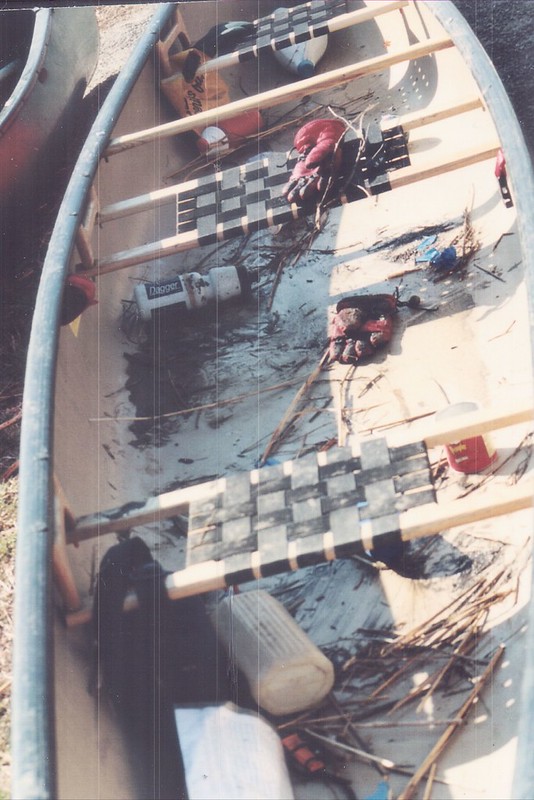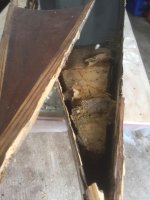G
Guest
Guest
In the “How smart am I” realm I have, uh, let’s just say numerous times, usually when wanting to beat feet ASAP away from a crowded landing after a peaceful trip , neglected to overturn the canoe to drain the bilge before hoisting it onto my shoulders and putting it on the truck racks.
Nothing like a head doused with muddy water, twigs and dead bugs to serve as a reminder. PFFFFTTT, PATOOIE, right in the face dammit.
Why I have needed that reminder multiple times is another story, but I am sure - truth be told - that I am not alone in that wearing of the day’s bilge accumulation running my shirtsleeves, hair and beard. That shirtsleeve action is especially awful, already hoisted and there, can’t drop the canoe now as water runs down my arms. HOW MUCH WATER IS IN THIS FREAKING THING!
To answer your actual question, for my preferences, as big as you dare. On a large vinyl deck plates I drill 1” holes as close to the tip as possible; it takes a lot of detritus to clog up a 1” hole. On functionally useless little 3” “deck caps” I might as well drill a big hole, those winky caps are good for nothing else anyway.
The bigger, within reason, the better. A 1/8” drain hole is freaking useless, a single spider egg sack, twig or pebble will occlude that drain hole.
On canoes where I have installed wood gunwales I lack the skill to make attractive, seamless inset scuppered decks, so I top mount them, leaving a drainage gap at the stem. Well, I use some deck plate overhang and a drainage gap; easy enough to unscrew a top mounted deck plate and refurbish or replace it.
Glenn’s “nothing at all” would have advantages, but given my druthers I’d opt for deck plates and large drain holes.
Nothing like a head doused with muddy water, twigs and dead bugs to serve as a reminder. PFFFFTTT, PATOOIE, right in the face dammit.
Why I have needed that reminder multiple times is another story, but I am sure - truth be told - that I am not alone in that wearing of the day’s bilge accumulation running my shirtsleeves, hair and beard. That shirtsleeve action is especially awful, already hoisted and there, can’t drop the canoe now as water runs down my arms. HOW MUCH WATER IS IN THIS FREAKING THING!
What size drain holes are best in deck plates? Reading this thread, I’m thinking the bigger the better. Glen has taken this thought to the extreme, his holes are bigger than the plates!
To answer your actual question, for my preferences, as big as you dare. On a large vinyl deck plates I drill 1” holes as close to the tip as possible; it takes a lot of detritus to clog up a 1” hole. On functionally useless little 3” “deck caps” I might as well drill a big hole, those winky caps are good for nothing else anyway.
The bigger, within reason, the better. A 1/8” drain hole is freaking useless, a single spider egg sack, twig or pebble will occlude that drain hole.
On canoes where I have installed wood gunwales I lack the skill to make attractive, seamless inset scuppered decks, so I top mount them, leaving a drainage gap at the stem. Well, I use some deck plate overhang and a drainage gap; easy enough to unscrew a top mounted deck plate and refurbish or replace it.
Glenn’s “nothing at all” would have advantages, but given my druthers I’d opt for deck plates and large drain holes.




